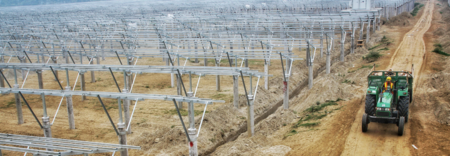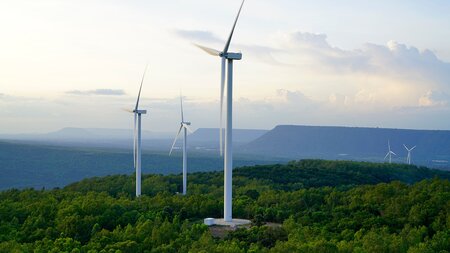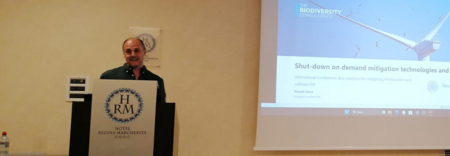Avoiding impacts on nature: Early-stage biodiversity risk screening for renewable energy projects
In 2023, 86% of all global power additions were from renewable energy sources (the largest increase in renewable energy capacity to date), expanding the stock of renewable power by around 14%. While the power addition has not been distributed evenly globally, it demonstrates the growing interest among governments and businesses in deploying renewable energy.
With increasing awareness of the interconnectedness of the climate and biodiversity crises, the importance of a nature-safe renewable energy transition is clear. Deployment of renewable energy that is not properly planned can lead to a host of risks to biodiversity, local communities and livelihoods, and also reputational and commercial risks to renewable energy firms.
Businesses and financial institutions need to understand whether their planned developments and investments are appropriately sited and to be able to plan for good practice biodiversity mitigation and management at the site level.
Here’s where early-stage biodiversity risk screening is vital.
What is early-stage biodiversity risk screening?
Early-stage biodiversity risk screening is an integral part of the due diligence process. It is a desktop exercise of identifying which biodiversity features might be present within a landscape or seascape based on existing information and determining which of these features might be most at risk from renewable energy development.
The available information can come from global and local databases, scientific literature, academic institutions and local experts, and project-level studies. Screening provides a first indication of which biodiversity features might be priorities, considering factors like their conservation threat status, known susceptibility to impact, stakeholder concern, and relevant regulations.
When planning renewable energy projects, early biodiversity risk screening is essential to understanding whether a potential project could have negative impacts on biodiversity. It helps to choose sites that avoid the greatest risks from the outset and to identify potential mitigation needs upfront, such as micro-siting project infrastructure, changing elements of project design to reduce impacts, scheduling construction to avoid important seasons for priority biodiversity features, and understanding potential operations phase measures (like shutdown on demand).
Thus, screening gives an early sense of the likelihood of achieving No Net Loss or Net Gain goals and can help avoid costly setbacks later in the development lifecycle.
How The Biodiversity Consultancy can help
We support a precautionary approach to early risk screening at an ecologically appropriate scale that affords the best possible view of potential risks and opportunities for a project.
Our proactive approach includes consideration of a project’s location, activities, and phases. We provide expert interpretation of screening results from our team of ecological and industry specialists, helping clients to make informed decisions about project viability, alignment with lending standards, and around resource allocation and project resilience.
The Biodiversity Consultancy has extensive experience conducting risk screenings for project developers and investors, particularly in emerging renewables markets where biodiversity risks may be less well-documented and biodiversity data may be limited.
Early risk screening can also be a first step to informing biodiversity sensitivity mapping at a scale broader than the project site, which can be useful for spatial planners and investors. Sensitivity maps are also based on existing biodiversity information, enabling comparison of different siting options for renewables and associated infrastructure. Both risk screening and sensitivity mapping can identify key information gaps and plan for addressing them strategically.
Categories: Renewable Energy, Insight, Nature Positive, The Mitigation Hierarchy
Make Nature Your Business
Find out how you can make nature your business.




